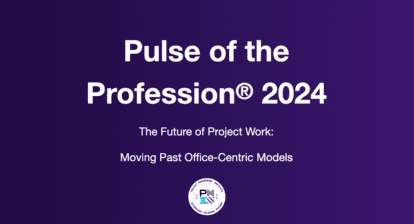
We’ve all felt it—the dynamic tension between the need for continued learning and the wish to get our to-do lists done. In the 23rd Annual Global CEO Survey, eighty percent of CEOs identified that the need for new skills is their most significant business challenge in the current environment. We are moving faster and more globally than at any other time in history. Add to this new paradigm of work, a move into an unknown post-pandemic workplace, and many of us are finding the idea of professional development begins to look a bit different!
Paul Falcone’s recent SHRM article discussed the initial decline of professional development in the face of the pandemic. With layoffs and shifts in many workplaces, this becomes a time when there is value in re-energizing development programming. Remote work and shifting business dynamics bring an increasing need to understand better the way we work together. Our understanding of our connections to each other determines the state of the system. We can either enhance the process or distract from it, and professional development can open up a whole host of new and diverse ways to enrich the system of people who work together.
Thinking of professional development as a way to help make the work system more effective, brings people together. With any system, the work output is only as efficient as each part works in conjunction with the other parts. When you are developing a course of action, you are looking for ways to enhance efficiency and effectiveness. The purpose of professional development, on this level, is to find the areas where the system is struggling and create an end goal of strengthening those areas. Training includes, not only technical skills, but also soft skills, too.
In a recent Harvard Business Review article, professors Mihnea Moldoveanu and Das Narayandas suggested that companies spend heavily on executive education, but often get an insufficient return on their investment. They propose that a personal learning cloud, which includes a fast-growing array of online courses, interactive platforms, and digital tools, can transform leadership development and make it easy and affordable to get “personalized, socialized, contextualized, and trackable” learning experiences. Successful learners are also tapping into network intelligence by looking for one-on-one conversations with those who have faced similar challenges and can share valuable expertise.
Tom Peters identified a new way of looking at leadership development in his interview published in the McKinsey Quarterly. Peters discussed the importance executives having unscheduled time. He advised, “One way to deal with the insane pace of change is by living to get smarter and to learn new things.” Set aside regular time to learn.
These development techniques help balance out the system, so that there is time to get the work done. The way we use professional development determines the value of the output. Here are three best practices to follow as you look at the role of professional development for you and your team in the upcoming year.
Identify the Need
As with any system, you can only strengthen the areas you know need repair. Consider how your work system operates. Take a look at the system as a whole, but also at the individual parts. Do you have some people that need more technical training? How are the soft skills of each team member? Are there different needs for different teams or individuals? Is there value in bringing in a coach to help the team work more effectively together? Is there one person who is consistently causing a break in the system, and if so, what are they doing. The more you know about the system’s inner workings, the better you are able to determine what development can strengthen your team.
Look at the End Goal
If you are attempting to determine the success of professional development, you have to look at the end goal. You may want there to be a box checked every year that says you have completed training. If this is your goal, then success looks like a checked box. This type of professional development is not geared toward strengthening the system. You are putting a marker on the spot that says you have performed the programs, but will not necessarily get the benefit of developed professional work. Alternatively, you could say that the goal is to have a more effective team. With this end goal, you’ll find success when individuals and the work system operate more effectively after training—and it’s measurable. Some questions to consider are: Do new skills need to be incorporated into our work? Are there new programs or techniques that will enhance the ability to do a particular job? What do I want my team or company to look like when this development is completed? What value is placed on communication, technical skills, and soft skills? Are we looking only at professional development, or should personal development be included to energize the entire system?
Take Meaningful Action
The biggest challenge found with incorporating professional development is taking meaningful action. Meaningful actions allow for more individualized development. Since people are varied in background, skills, and viewpoints, some expansion of their professional skills could benefit from more varied activities. Instead of having a one-size-fits-all training program, find ways to incorporate professional development into daily activities. Meaningful events for development bring a higher level of success to the system. It may be that there is a list of choices for how and what training is available depending on the needs and end goals of your company. All too often, leaders say that professional development is essential, but, when employees are asked about the programs, they do not feel as if there is credible value-added for the plans in place.
This period of time is offering us an unprecedented opportunity to change the way we do business, and the doors are wide open on how we define professional development and what we reinforce to create a more resilient workplace. Professional development extends from necessary technical skills to what our offices look like or how we connect. We are developing what it means to be a professional! Let’s be sure our professional development programs evolve with us!
Boost your MS Project skills. Check out MPUG’s latest Courses!







